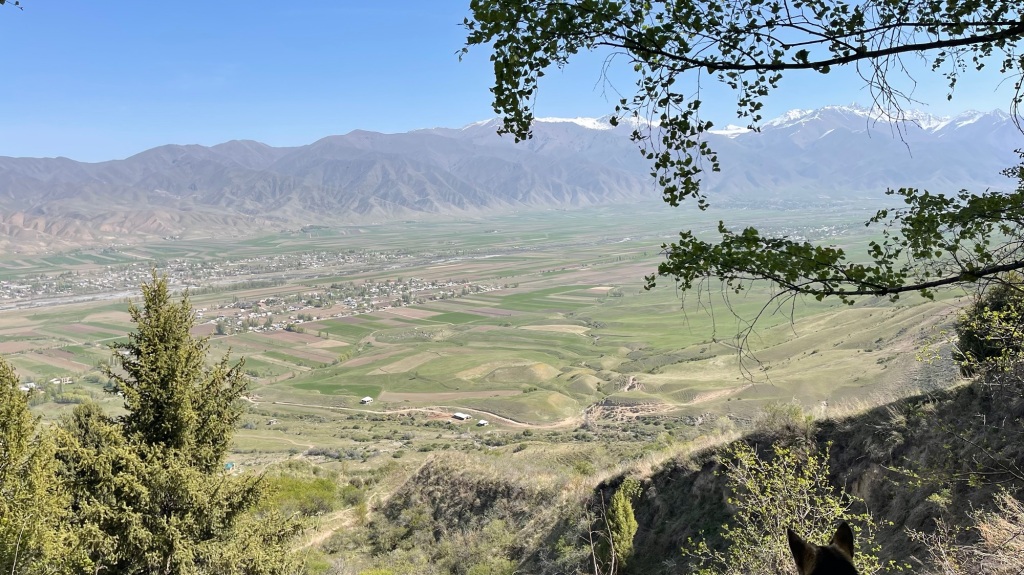
Official Name: Kyrgyz Republic
Established: 1470 (Kyrgyz Khanate) / 31 August 1991 (Independence USSR)
Population: 7 million (2022 estimate)
Religion: Muslim (90%), Christain (7%)
Offical Languages: Kyrgyz & Russian
Capital: Bishkek
Order of Visit: 73
First Visit: 09 May 2023
Last Visit: 14 May 2023
Duration: 6 Days
Highlights:
Bishkek – Victory Day celebrations in Ala-Too Square, Bishkek Bazaar, Victory Square, Changing of the Gaurd, Imam Sarahsi Bishkek Central Mosque, climbing Burana Tower (Chüy Valley)
Chong-Kemin – Beautiful Mountain Ranges, Mountain hiking
Song Kul – Learning about Felt making (Kochkor village), exploring Yurt camp, visiting Issyk-Kul Lake, Holding an Eagle, Hiking in Song Kul, Exploring Fairy Tale Valley (amazing rock formations)
Barskoon – Exploring landscape at Barskoon, Learning how Yurts are constructed, Cultural music,
Karakol – The beautiful Russian Holy Trinity Orthodox Church, Prejevalskiy Museum, Hiking Jeti-Oguz Gorge, Hiking Karakol National Park
Cities Visited: Bishkek, Chong-Kemin, Song Kul, Tamga, Barskoon, Karakol
Published: 21 March 2023 | Updated: 25 June 2024
Location and Geography
Kyrgyzstan is a landlocked country in Central Asia with a population of 7 million people and an area of 199,951 square kilometres. Kyrgyzstan is bordered by Kazakhstan to the north, Uzbekistan to the west, Tajikistan to the south, and China to the east.

History and Culture
Kyrgyzstan’s history spans a variety of cultures and empires. Although geographically isolated by its highly mountainous terrain, Kyrgyzstan has been at the crossroads of several great civilizations as part of the Silk Road.
The Seljuk Turks began migrating to what is now known as Türkiye (then referred to as Anatolia) in the 11th century. The Seljuk Sultanate of Rum ruled Anatolia until the Mongol invasion in 1243.
Beginning in the late 13th century, the Ottomans united the principalities and conquered the Balkans, while the Turkification of Anatolia further progressed during the Ottoman period. After Mehmed II conquered Constantinople (now Istanbul) in 1453, Ottoman expansion continued under Selim I. During the reign of Suleiman the Magnificent, the Ottoman Empire became a global power.
In the late nineteenth century, the eastern part of what is today Kyrgyzstan, mainly the Issyk-Kul Region, was ceded to the Russian Empire by Qing China through the Treaty of Tarbagatai. The territory, then known in Russian as “Kirghizia”, was formally incorporated into the Empire in 1876. The Russian takeover was met with numerous revolts, and many of the Kyrgyz opted to relocate to the Pamir Mountains and Afghanistan.
In 1936 the Kirghiz Soviet Socialist Republic was formed to become a constituent republic of the Soviet Union. On 31 August 1991, Kyrgyzstan declared independence from Moscow and a democratic government was established. Kyrgyzstan attained sovereignty as a nation state after the breakup of the Soviet Union in 1991.

In late April 2021, a conflict over water escalated into one of the most serious border clashes between Kyrgyzstan and Tajikistan since independence in 1991. In September 2022 armed clashes, including the use of artillery, erupted along much of the border between Kyrgyzstan and Tajikistan.
Throughout its existence, the country has continued to endure ethnic conflicts, revolts, economic troubles, transitional governments and political conflict.
Kyrgyzstan is a member of the Commonwealth of Independent States, the Eurasian Economic Union, the Collective Security Treaty Organization, the Shanghai Cooperation Organisation, the Organisation of Islamic Cooperation, the Organization for Security and Cooperation in Europe.
Kyrgyzstan is the second poorest country in Central Asia after Tajikistan with 22.4% of the country’s population living below the poverty line.
What drew me to visit Kyrgyzstan
Kyrgyzstan’s stunning landscape with striking mountains, gorgeous passes, and beautiful alpine lakes. A chance to see some of the 85 mountain ranges and see some of the Soviet history is what I hope to experience.

A chance to staying in a traditional Yurt and experience a tougher and simpler life.

This visit is part of the Five Stans of Silk Road G Adventures tour that will see me visiting; Kyrgyzstan, Kazakhstan, Tajikistan, Uzbekistan, Turkmenistan.
What I experienced in Kyrgyzstan
I found a beautiful country with stunning landscapes, snow tipped mountains, a strong horse culture, I even held a hunting eagle, and experienced very spiritual cultural music.

Sleeping in a traditional Yurt under the stars was a unique camping experience. I later got to help building a new Yurt which was amazing to be part of to see how the are put together and why they provide such great protection.

Hiking mountains and valleys I felt a connection to nature I didn’t know I was missing. climbing and hiking around rock formations in Fairy Tale Valley felt as far from city life as I could imagine.

The strong Soviet and Russian presence could be easily seen in most cities. Being in Kyrgystan for Victory Day celebrations really highlight the World War 2 role people in this country played in the Soviet Army. The Russain Orthodox Churches were in most places and obviously still have a strong place in Kyrgystan.


Leave a comment